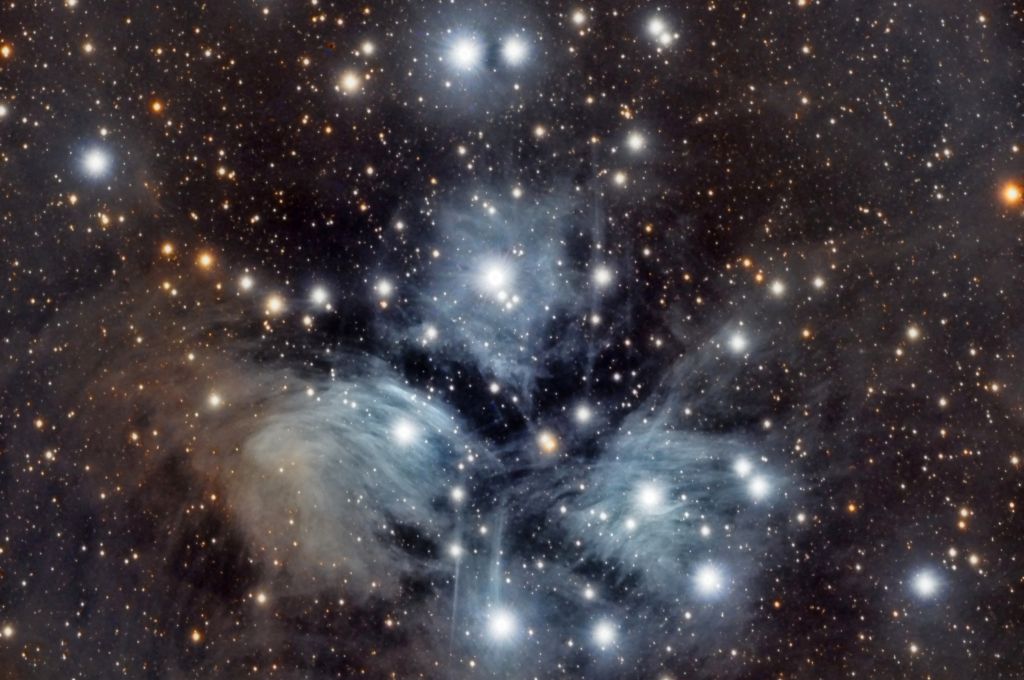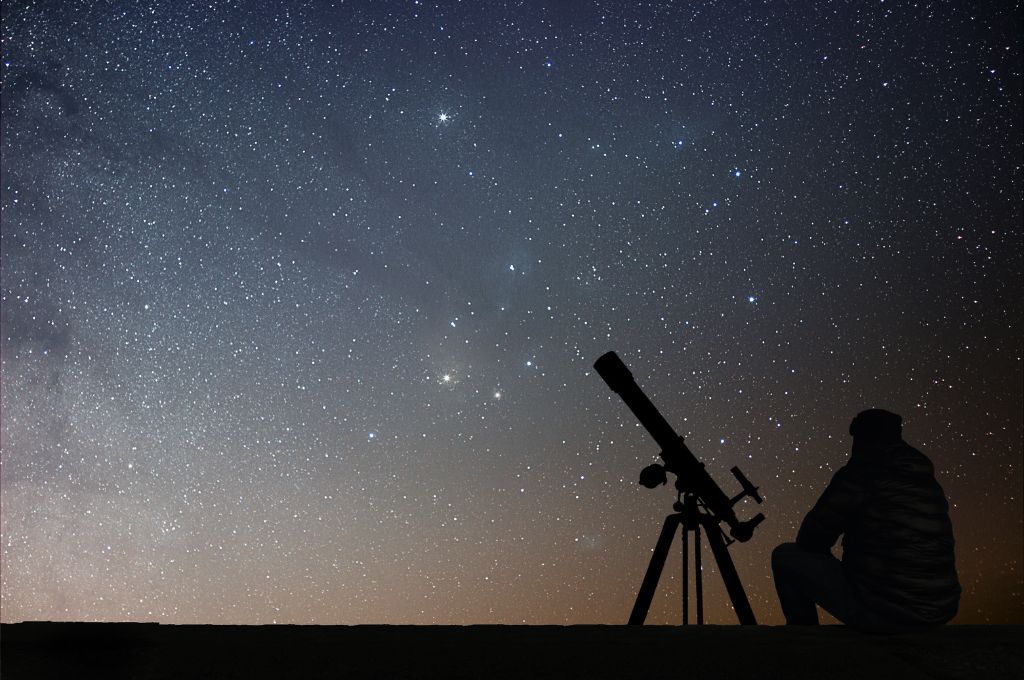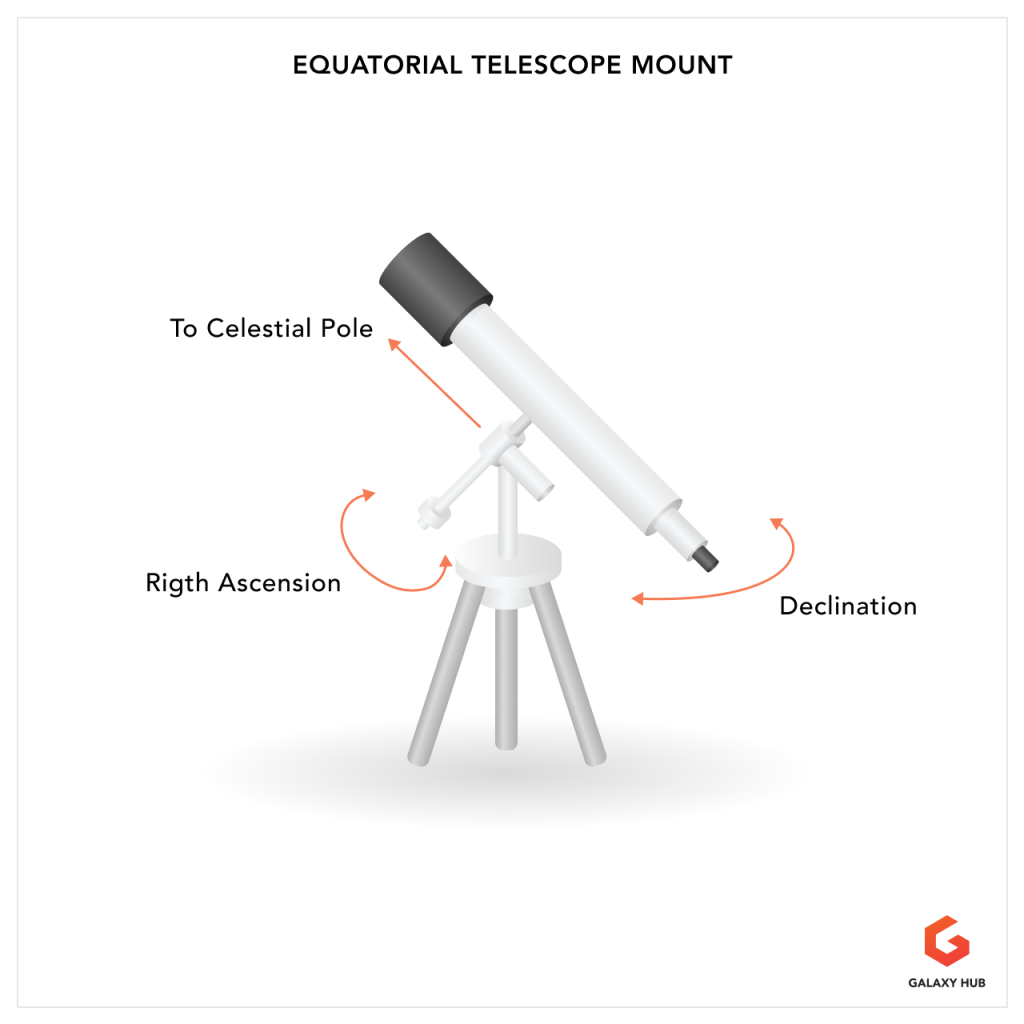Not long after you begin your amateur astronomer journey, you will no doubt discover “Messier objects.” They are some of the most well-known deep sky objects but what exactly are they and why are they so special?
In this article, we will tell you everything you need to know about Messier objects and give you a helpful breakdown of some of the most difficult and easiest Messier objects to find as well as an overview of the entire Messier catalog.
Who Was Charles Messier?
Charles Messier was a French astronomer who was obsessed with chasing comets. However, he would often come across fuzzy objects in the sky that looked like comets, but were, in fact, not comets.
Since comets move slowly through the sky, it would take several nights of observation to determine if the object he’d found was actually a comet, or, in fact, something else.

If the object didn’t move, then (as far as he was concerned) he’d wasted his time. So to make life easier for himself and others, he created a catalog of all the comet-like objects he knew of. This, in turn, helped him to distinguish between potential genuine comets and the false comets he’d previously encountered.
Messier did a lot of his observing in Paris, from the Hôtel de Cluny (now the Musée national du Moyen Âge), with only a 100mm (4 inch) refractor. Back then, in the late 18th century, there was very little light pollution, and the skies were a lot darker than they are today. As a result, Messier was able to identify a lot of objects that are now, sadly, simply impossible to see from the city.

The first catalog, published in 1774 in the journal of the French Academy of Sciences in Paris, started off with only 45 objects.
Incidentally, one common misconception is that he discovered all the objects himself, but that’s not actually the case. Messier was responsible for discovering 18 of the original 45; the others were either known since prehistory (for example Messier 45, the Pleiades star cluster) or discovered by fellow astronomers in previous years.
Messier added another 58 objects to his list over the next ten years, with the second edition, containing 103 objects, published in 1784. Of these, Messier had discovered a total of 41 himself.
Unfortunately, Charles Messier died in April 1817, but his work was continued by others. In the 1900s, astronomers and historians discovered evidence of an additional seven objects that were observed by Messier or his assistant. These were posthumously added to the list, bringing the revised total to 110.
Ironically, even though Messier achieved his goal of becoming a successful comet hunter (he discovered 13 himself, between 1760 and 1798), it’s his catalog of objects that’s proven to be his legacy. Without it, he would probably be relegated to a footnote on the pages of astronomical history!
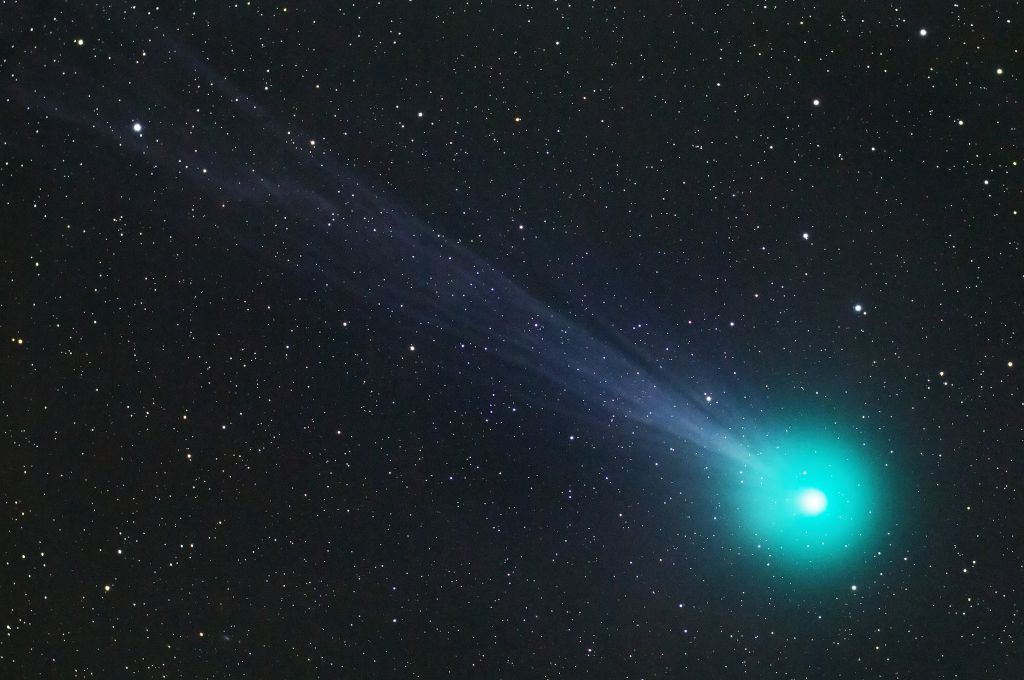
Why Are Messier Objects So Special?
Messier objects tend to be some of the larger and brighter objects in the night sky, with many of them located near bright stars. This, in turn, makes them easy to find and observe, and many beginners will start by tracking these objects down before moving on to the generally fainter (and more challenging) objects of the New General Catalog (NGC).
(There are some fainter objects on Messier’s list that suffer from being too close to bright stars, but for the most part, their convenient locations are more of a help than a hindrance.)
A number of the objects are also very attractive through binoculars or a telescope (for example, the aforementioned Pleiades or M42, the Great Orion Nebula), making them popular targets for amateur astronomers and astrophotographers alike.
The Messier catalog also consists of a good variety of deep sky objects, which makes them fun and interesting to chase. Specifically,
- 40 galaxies
- 29 globular star clusters
- 26 open star clusters
- 7 diffuse nebulae
- 4 planetary nebulae
- 1 asterism
- 1 double star
- 1 star cloud
- 1 supernova remnant
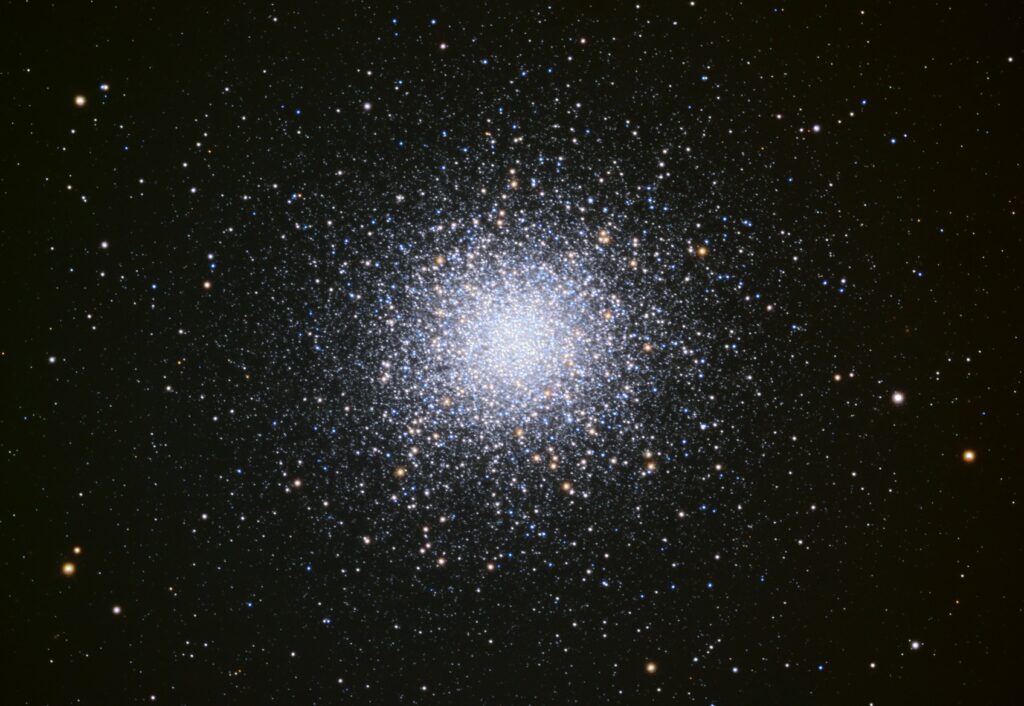
The Complete List of Messier Objects
| M# | Name | Type | Mag | Constellation |
| M1 | The Crab Nebula | Supernova Remnant | 8.4 | Taurus |
| M2 | Globular Star Cluster | 6.5 | Aquarius | |
| M3 | Globular Star Cluster | 6.2 | Canes Venatici | |
| M4 | The Spider Globular | Globular Star Cluster | 5.6 | Scorpius |
| M5 | The Rose Cluster | Globular Star Cluster | 5.7 | Serpens |
| M6 | The Butterfly Cluster | Open Star Cluster | 4.2 | Scorpius |
| M7 | Ptolemy’s Cluster | Open Star Cluster | 3.3 | Scorpius |
| M8 | The Lagoon Nebula | Diffuse Nebula | 6.0 | Sagittarius |
| M9 | Globular Star Cluster | 7.7 | Ophiuchus | |
| M10 | Globular Star Cluster | 6.6 | Ophiuchus | |
| M11 | The Wild Duck Cluster | Open Star Cluster | 5.8 | Scutum |
| M12 | Globular Star Cluster | 6.7 | Ophiuchus | |
| M13 | The Great Hercules Cluster | Globular CLuster | 5.8 | Hercules |
| M14 | Globular Cluster | 7.6 | Ophiuchus | |
| M15 | The Great Pegasus Cluster | Globular Cluster | 6.2 | Pegasus |
| M16 | The Eagle Nebula | Diffuse Nebula | 6.4 | Serpens |
| M17 | The Swan Nebula The Omega Nebula | Diffuse Nebula | 6.0 | Sagittarius |
| M18 | The Black Swan Cluster | Open Star Cluster | 6.9 | Sagittarius |
| M19 | Globular Star Cluster | 6.8 | Ophiuchus | |
| M20 | The Trifid Nebula | Diffuse Nebula | 6.3 | Sagittarius |
| M21 | Webb’s Cross Cluster | Open Star Cluster | 5.9 | Sagittarius |
| M22 | The Great Sagittarius Cluster | Globular Star Cluster | 5.1 | Sagittarius |
| M23 | Open Star Cluster | 5.5 | Sagittarius | |
| M24 | The Sagittarius Star Cloud | Star Cloud | 4.6 | Sagittarius |
| M25 | Open Star Cluster | 4.6 | Sagittarius | |
| M26 | Open Star Cluster | 8.0 | Scutum | |
| M27 | The Dumbbell Nebula | Planetary Nebula | 7.1 | Vulpecula |
| M28 | Globular Star Cluster | 6.8 | Sagittarius | |
| M29 | The Cooling Tower | Open Star Cluster | 6.6 | Cygnus |
| M30 | The Jellyfish Cluster | Globular Star Cluster | 7.2 | Capricornus |
| M31 | The Andromeda Galaxy | Galaxy | 3.3 | Andromeda |
| M32 | Galaxy | 7.9 | Andromeda | |
| M33 | The Triangulum Galaxy The Pinwheel Galaxy | Galaxy | 5.8 | Triangulum |
| M34 | The Spiral Cluster | Open Star Cluster | 5.2 | Perseus |
| M35 | The Shoe Buckle Cluster | Open Star Cluster | 5.1 | Gemini |
| M36 | The Pinwheel Cluster | Open Star Cluster | 6.0 | Auriga |
| M37 | The Salt and Pepper Cluster | Open Star Cluster | 5.6 | Auriga |
| M38 | The Starfish Cluster | Open Star Cluster | 6.4 | Auriga |
| M39 | Open Star Cluster | 4.6 | Cygnus | |
| M40 | Double Star | 9.6 | Ursa Major | |
| M41 | The Little Beehive Cluster | Open Star Cluster | 4.5 | Canis Major |
| M42 | The Great Orion Nebula | Diffuse Nebula | 4.0 | Orion |
| M43 | De Mairan’s Nebula | Diffuse Nebula | 9.0 | Orion |
| M44 | The Beehive Cluster The Praesepe | Open Star Cluster | 3.1 | Cancer |
| M45 | The Pleiades The Seven Sisters The Subaru | Open Star Cluster | 1.5 | Taurus |
| M46 | Open Star Cluster | 6.1 | Puppis | |
| M47 | Open Star Cluster | 4.4 | Puppis | |
| M48 | Open Star Cluster | 5.8 | Hydra | |
| M49 | Galaxy | 8.4 | Virgo | |
| M50 | The Heart-shaped Cluster | Open Star Cluster | 5.9 | Monoceros |
| M51 | The Whirlpool Galaxy | Galaxy | 7.9 | Canes Venatici |
| M52 | The Scorpion Cluster | Open Star Cluster | 6.9 | Cassiopeia |
| M53 | Globular Star Cluster | 7.6 | Coma Berenices | |
| M54 | Globular Star Cluster | 7.6 | Sagittarius | |
| M55 | The Specter Cluster | Globular Star Cluster | 6.3 | Sagittarius |
| M56 | Globular Star Cluster | 8.3 | Lyra | |
| M57 | The Ring Nebula | Planetary Nebula | 8.8 | Lyra |
| M58 | Galaxy | 9.5 | Virgo | |
| M59 | Galaxy | 9.6 | Virgo | |
| M60 | Galaxy | 8.8 | Virgo | |
| M61 | The Swelling Spiral Galaxy | Galaxy | 9.5 | Virgo |
| M62 | The Flickering Globular Cluster | Globular Cluster | 6.4 | Ophichus |
| M63 | The Sunflower Galaxy | Galaxy | 8.5 | Canes Venatici |
| M64 | The Black Eye Galaxy | Galaxy | 8.4 | Coma Berenices |
| M65 | Galaxy | 9.2 | Leo | |
| M66 | Galaxy | 8.9 | Leo | |
| M67 | The King Cobra Cluster | Open Star Cluster | 6.9 | Cancer |
| M68 | Globular Star Cluster | 7.8 | Hydra | |
| M69 | Globular Star Cluster | 7.6 | Sagittarius | |
| M70 | Globular Star Cluster | 7.9 | Sagittarius | |
| M71 | The Angelfish Cluster | Globular Star Cluster | 8.2 | Sagitta |
| M72 | Globular Star Cluster | 9.3 | Aquarius | |
| M73 | Asterism | 8.9 | Aquarius | |
| M74 | The Phantom Galaxy | Galaxy | 9.0 | Pisces |
| M75 | Globular Star Cluster | 8.5 | Sagittarius | |
| M76 | The Little Dumbbell Nebula | Planetary Nebula | 10.1 | Perseus |
| M77 | Cetus A The Squid Galaxy | Galaxy | 9.0 | Cetus |
| M78 | Casper the Friendly Ghost Nebula | Diffuse Nebula | 8.3 | Orion |
| M79 | Globular Star Cluster | 7.7 | Lepus | |
| M80 | Globular Star Cluster | 7.3 | Scorpius | |
| M81 | Bode’s Galaxy | Galaxy | 6.8 | Ursa Major |
| M82 | The Cigar Galaxy | Galaxy | 8.0 | Ursa Major |
| M83 | The Southern Pinwheel Galaxy | Galaxy | 7.1 | Hydra |
| M84 | Galaxy | 9.0 | Virgo | |
| M85 | Galaxy | 9.0 | Coma Berenices | |
| M86 | Galaxy | 8.8 | Virgo | |
| M87 | Virgo A The Smoking Gun Galaxy | Galaxy | 8.7 | Virgo |
| M88 | Galaxy | 9.4 | Coma Berenices | |
| M89 | Galaxy | 9.7 | Virgo | |
| M90 | Galaxy | 9.4 | Virgo | |
| M91 | Galaxy | 10.1 | Coma Berenices | |
| M92 | Globular Cluster | 6.4 | Hercules | |
| M93 | The Critter Cluster | Open Star Cluster | 6.2 | Puppis |
| M94 | The Crocodile Eye Galaxy The Cat’s Eye Galaxy | Galaxy | 7.9 | Canes Venatici |
| M95 | Galaxy | 9.7 | Leo | |
| M96 | Galaxy | 9.1 | Leo | |
| M97 | The Owl Nebula | Planetary Nebula | 9.8 | Ursa Major |
| M98 | Galaxy | 9.9 | Coma Berenices | |
| M99 | The Coma Pinwheel Galaxy St. Catherine’s Wheel | Galaxy | 9.7 | Coma Berenices |
| M100 | The Mirror Galaxy | Galaxy | 9.3 | Coma Berenices |
| M101 | The Pinwheel Galaxy | Galaxy | 7.8 | Ursa Major |
| M102 | The Spindle Galaxy | Galaxy | 9.8 | Draco |
| M103 | Open Star Cluster | 7.4 | Cassiopeia | |
| M104 | The Sombrero Galaxy | Galaxy | 8.1 | Virgo |
| M105 | Galaxy | 9.2 | Leo | |
| M106 | Galaxy | 8.3 | Canes Venatici | |
| M107 | The Crucifix Cluster | Globular Star Cluster | 7.9 | Ophiuchus |
| M108 | The Surfboard Galaxy | Galaxy | 10.0 | Ursa Major |
| M109 | The Vacuum Cleaner Galaxy | Galaxy | 9.6 | Ursa Major |
| M110 | Galaxy | 8.1 | Andromeda |

The Top 10 Easiest Messier Objects to Find
Many of the Messier objects can be found within the same binocular view field of view as a bright star – but that doesn’t necessarily mean they’re easy to find! For example, M108, the Surfboard Galaxy, is just a degree and a half from Merak, one of the seven bright stars that form the Big Dipper.
However, Merak shines at a reasonably bright magnitude 2.3, whereas M108 is magnitude 10.0. That’s a very large difference – so much so that the light from Merak will drown out the light from the galaxy. Similarly, M97, the Owl Nebula, is just two and a quarter degrees from Merak, and while it’s brighter than M108, it’s difficult to spot because its light is scattered over a larger area.
With this in mind, we’ve selected the brightest and most conveniently located objects for our list. In Messier catalog order, they are:
M7 – Ptolemy’s Cluster
Here’s a cluster that’s conveniently located roughly midway between the sting of Scorpius and the spout of the teapot asterism in Sagittarius. It lies within the same binocular field of view as Shaula and Lesath, the scorpion’s stinger stars, with the two stars pointing toward the cluster.
At magnitude 3.3, this cluster is visible to the naked eye and is an easy and impressive sight for binoculars and telescopes alike. Ptolemy’s Cluster is, by far, the easiest cluster you’ll see in the summer sky!
M8 – The Lagoon Nebula
Besides M42, the Great Orion Nebula, the Lagoon Nebula is the brightest diffuse nebula in the Messier catalog. You’ll find it within the same binocoular field of view as Kaus Borealis, the magnitude 2 star that marks the top of the teapot asterim in Sagittarius. Even low powered binoculars under suburban skies will show a misty patch, split in two by a dark band, with a star illuminating each half of the nebula.
M13 – The Great Hercules Cluster
While not the brightest globular on Messier’s list, M13 is one of the easiest to locate, especially for observers at more northerly latitudes, as it passes high overhead during the summer months.
Located about a third of the way from Eta to Zeta Herculis, M13 can be detected with binoculars but looks amazing through a telescope. A magnification of around 100x will show chains of stars that give the cluster the appearance of a tentacled sea creature.
M22 – The Great Sagittarius Cluster
Like the Great Hercules Cluster, M22 is a large, bright and easy to locate globular cluster, thanks to its close proximity to Kaus Borealis – the same star used to find the M8, the Lagoon Nebula.
However, whereas M8 is five and a half degrees to the northwest of the star, M22 is just half that distance, and toward the northeast. Again, easily seen with binoculars from suburban skies, telescopes will show a uniformly bright, circular misty patch at low power, with some resolution of the individual stars at around 50x.
M31 – The Andromeda Galaxy
Location-wise, M31 might seem a little “out there,” especially if you’re a beginner. But this is the brightest galaxy (other than our own Milky Way) and the furthest object you can potentially see with just the naked eye – although nowadays you’ll probably need reasonably dark skies to see it.
It can be found just to the northwest (and within the same binocular field of view) as Mu Andromedae, the third star in the more northerly line of stars that curves away from Alpheratz. Small scopes show an elongated misty patch, while larger scopes can show its dark dust lane and its spiral arms.
M42 – The Great Orion Nebula
Easily seen with the naked eye, even from suburbia, M42 can be seen as a tiny, misty patch just below the three stars of Orion’s belt. Binoculars provide a fine view, with the brightest members of the Trapezium cluster being barely visible at the nebula’s center. Telescopes will show a faint greenish color, plus a fair amount of texture and structure, even at reasonably low powers.
M44 – The Beehive Cluster
The Beehive holds the distinction of being the only deep sky object that’s brighter than the stars of the constellation in which it resides. There was a time when you could see it with the naked eye from suburbia, but nowadays light pollution has all but drowned it out.
Fortunately, its still easily detected with binoculars, but you’ll need to look carefully about midway between Pollux in Gemini and Regulus in Leo. Once you’ve found it, a little practice can make it pretty easy to find again.
M45 – The Pleiades
By far the easiest object on Messier’s list, the Pleiades are a large, bright cluster that almost anyone can see with the naked eye from even suburban locations.
You can find it by simply following the three stars of Orion’s belt north to Aldebaran in Taurus, and then continuing the line until you come to the cluster itself. This is one cluster that’s best seen through binoculars and that can truly be described as stunning. It’s little wonder the Pleiades have fascinated civilizations around the world for millennia.
M51 – The Whirlpool Galaxy
One of the brightest galaxies on the list, the Whirlpool appears within the same binocular field of view as Alkaid, the star at the end of the handle of the Big Dipper, but it lies just over the border in Canes Venatici.
It’s visible with binoculars from semi-rural locations and forms a flattened triangle with Alkaid and 24 CVn. Small telescopes will show a small, circular misty patch, while larger apertures will reveal hints of the spiral arms and its neighbor, NGC 5195.
M57 – The Ring Nebula
M57 is the easiest planetary nebula in the entire night sky, and the one that beginners always start with.
You may be able to locate it with binoculars, but at magnitude 8.8 you’ll most likely need a dark location to spot it. It’s nearly halfway between the stars Sheliak and Sulafat in Lyra, and can be easily seen with a telescope from suburban skies.
A magnification of around 50x will show the nebula’s circular shape, but you’ll need a magnification closer to 100x to see the shape that gives the nebula its name. A favorite with astronomers everywhere, it looks like a smoke ring in space!

M57 – The Ring Nebula. Image via Nasa
The Top 10 Most Challenging Messier Objects
Since galaxies are the most distant objects you can observe, it should come as no surprise that they’re typically also the hardest.
At the other end of the scale, open star clusters are usually the easiest, as they’re much closer and tend to be large and bright. Star clusters contain hundreds of stars within a relatively small area of sky, whereas galaxies are much smaller, fainter, and will often appear as low contrast, misty patches.
(Incidentally, although the occasional star might appear near to a galaxy, making it easier to focus the view, every star you see in the night sky belongs to our own Milky Way galaxy, and is not associated with the target galaxy at all.)
It’s worth noting here that some observers will find some targets easy, while others will find the same targets to be a challenge. This seems to be the case with M78 and M97, while M101 is said to be easy from a dark site but very challenging from any location that suffers from light pollution.
M29 – The Water Cooler Cluster
Ordinarily, star clusters wouldn’t be too hard to find and observe, and while M29 is just under two degrees south of Sadr, the central star in Cygnus, the cluster is small and faint, with only a few bright stars to help it stand out. To make matters worse, the cluster appears against the Milky Way, and has a tendency to be lost among the background stars.
M74 – The Phantom Galaxy
Many observers agree that M74 is the hardest galaxy on Messier’s list (hence its name.) Again, like many objects, it can be found close to a star, but in this case the star in question, Eta Piscium, is a relatively dim magnitude 3.6, making it harder to locate both the star and the galaxy. M74 is also fairly large compared to many other galaxies, and its light is therefore scattered over a larger area than usual.
M76 – The Little Dumbbell Nebula
Along with M74, the Little Dumbbell Nebula is one of the hardest of the Messier objects to track down. The problem here is that it’s faint (magnitude 10.1) and small (just two arcminutes in diameter) giving it the appearance of a star at low magnification. Just to confuse matters further, it lies three degrees north of the magnitude 3.6 star Upsilon Persei, and while M76 itself is located in Perseus, Upsilon Persei actually lies just over the border in Andromeda!
M78 – Casper the Friendly Ghost Nebula
Orion is home to both the brightest diffuse nebula on Messier’s list (M42) and also the faintest – M78. The problem here is that, unlike M42, M78 is relatively dim (magnitude 8.3) and small (8 arcminutes in diameter.) It’s located two and a half degrees northeast of Alnitak, the easternmost star of Orion’s belt, but as that star shines at magnitude 1.7, it can easily drown out M78 – and there are no other stars closer to M78’s magnitude in the vicinity.
M91
This galaxy can be found among the galaxies that lie on the border between Coma Berenices and Virgo, which, to some extent, is part of the problem. There are no reasonably bright stars nearby, and while there are a number of other Messier galaxies in the area, they are all at least one magnitude brighter. The result? A faint galaxy in a group of faint galaxies that’s already difficult to find.
M97 – The Owl Nebula
M97 suffers in three respects. Firstly, as previously mentioned, it’s close to Merak in Ursa Major, which tends to outshine the nebula. Secondly, it’s a faint magnitude 9.8 and, thirdly, its ghostly light is scattered over a relatively large area. All of which can make M97 a little troublesome. It can be seen from semi-rural locations, but the view has been known to disappoint.
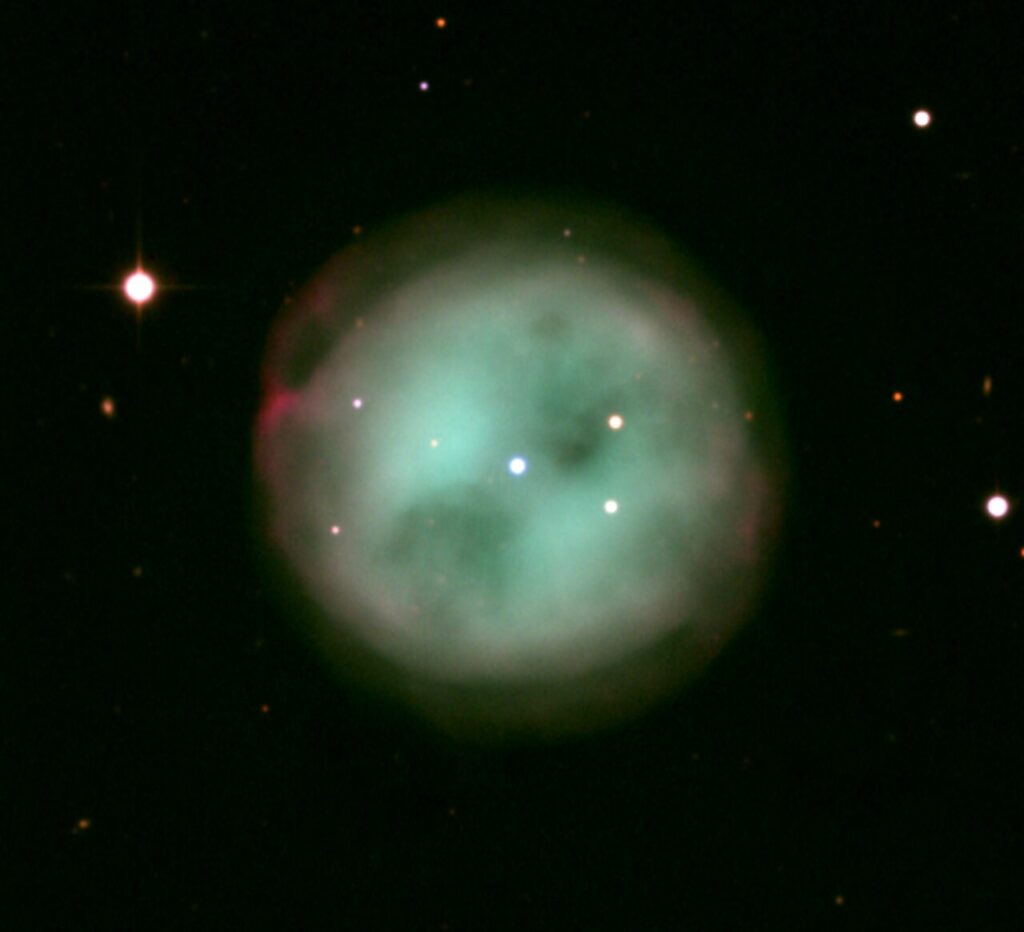
M98
M98 is in a similar position to M91 – literally. It can be found on the outskirts of the same Coma-Virgo group of galaxies, but some five and a quarter degrees to the west, and just half a degree from the magnitude 5 star, 6 Comae Berenices. This, at least, can act as a marker. M98 is roughly the same brightness as M91, but is longer and narrower, with a reasonably bright core.
M101 – The Pinwheel Galaxy
In principle, M101 should be easy enough; it lies five and a half degrees northwest of Alkaid, the star at the end of the Big Dipper’s handle, and five and three quarter degrees east of the famous double star, Mizar. At magnitude 7.8, it’s also reasonably bright,but with an apparent diameter of 24 arcminutes, that light is spread over a comparatively large area.
M108 – The Surfboard Galaxy
As mentioned earlier, M108 can be found just a degree and a half southeast of the star Merak in Ursa Major, and three quarters of a degree northwest of M97, the Owl Nebula. While this sounds convenient, its magnitude (10.0, compared to Merak’s 2.3) means the star’s light easily drowns out the light from the galaxy. Matters are not helped by its tiny size – just 4 x 2 arcminutes – making this galaxy challenging, to say the least.
M109 – The Vacuum Cleaner Galaxy
M109 is the third galaxy in Ursa Major to make our list, and it’s also the most difficult. M101 and M108, along with M97, all lie close to a bright star, but none of them are as close as M109 is to Phecda. This magnitude 2.4 star is just half a degree to the northwest of M109 and far outshines the magnitude 9.6 galaxy. Be sure to move the star out of your field of view before increasing the magnification, otherwise you could even find its light dazzling you.
Running a Messier Marathon
If you belong to an astronomy group (either online or in-person) you may have heard stories from folks who have completed a Messier marathon. This is when you observe every Messier object in a single night – not an easy challenge by any means!
For starters, to stand a good chance of bagging them all, you’ll need to be between around 55 degrees north and the equator. That’s because there are some objects that will be very low (or even below) the southern horizon for observers further north, while observers in the southern hemisphere will have difficulty spotting objects that are too far north on the celestial sphere (eg, those in Ursa Major.)
(Remember, Messier did his observing from Paris, which is at a latitude of 48 degrees north.)
This isn’t to say it’s not worth trying if you live outside those latitudes, but depending on where you live, you might not get to see them all.
The best time for a Messier marathon is around the end of March and the start of April, as that’s when all 110 objects will be over the horizon at some point during the night. For example, objects found in the autumn constellations are setting in the west as the skies darken, while the winter constellations will appear toward the south and southwest.
Spring constellations can be found rising in the east and southeast, while the constellations of summer will rise in the hours before the dawn.
Besides planning for late March or early April, you should also consider the Moon. You’ll want to pick a date that’s as close to the new Moon as possible during this time. The Moon shouldn’t be any more than about half illuminated, as its light will brighten the sky too much and make the fainter objects difficult (or impossible) to see.
Be sure to have an observing strategy. For example, it makes sense to start with the objects in the west, as it won’t take long for those objects to sink too low and become unobservable, before then moving to other areas of the sky.
That said, there’s no definitive methodology here, and your strategy may change, depending upon your location and your equipment. However, many pre-defined lists follow a very similar pattern and often start with the galaxies of late autumn and end with the globulars of late summer.
You can find a number of lists, plus a bunch of other useful info, at the SEDS Messier Catalog website.
Lastly, don’t expect to bag all 110 objects on your first time out. This is a challenge that requires a lot of planning, skill and – most of all – patience. You’ll need to find some objects in a very short period of time (especially at the start and at the end) and this may mean you’ll have to abandon a few of the difficult objects in order to bag the easier ones.
That said, if you have a few minutes before you need to track down your next target, don’t forget to breathe, relax and enjoy the view.
Happy Hunting!

